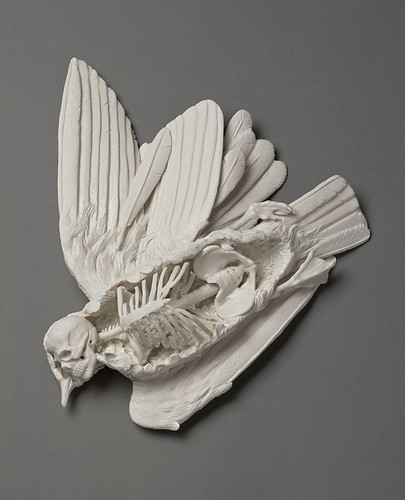Briefly, the primary antibodies used consist of phosphorThr172 AMPK (AMPK-p, 2535), total AMPK (AMPK-T, 2603), and Atg5 (2630) from Mobile Signaling Technological innovation (Danvers, MA, United states of america) LC3 (L7543), Flag (F7425), and -actin (A5441) from Sigma-Aldrich (St Louis, MO, United states of america) Beclin one (SC11427), pERK (SC-7383), and t-ERK (SC94) from Santa Cruz Biotechnology (Santa Cruz, CA, United states) and the secondary antibodies have been horseradish peroxidase-coupled goat anti-mouse-IgG (AP124P) from Merck Millipore (Darmstadt, Germany) and goat anti-rabbit-IgG (81120) from Invitrogen Company (Camarillo, CA, Usa).Microorganisms that contains shRNA sequences of AMPK and atg5 (Desk one), cloned into the Agel and EcoRI restriction internet sites of pLKO.one-Puro plasmid, were obtained from the Nationwide RNAi Core Facility (NRCF, Academia Sinica, Taipei, Taiwan, as earlier explained [31]. After affirmation of these sequences, the created plasmids were packaged into lentivirus by NRCF and the multiplicity of infection (MOI) was decided. OECM-one, CE81T/VGH, SCC25, SCC15 cells (5 x 106) and Jurkat T cells (1 x 107) ended up cultured in medium containing plasmid-packaged virus (MOI = 4), polybrene (eight g/ml) (Sigma-Aldrich, 107689), and 1% FBS for 24 several hours. Cells had been then picked in medium containing puromycin (two g/ml) and ten% FBS for forty eight hours with  or with no additional cloning, and cultured in ten% FBS-containing medium. Alternatively, the synthetic beclin 1 shRNA (Table one) was cloned into the EcoRI and HindIII restriction sites of pHsU6 plasmid, a kind gift from Dr. Ming-Derg Lai (Institute of Healthcare Standard 166518-60-1 Sciences of Countrywide Cheng Kung University, Tainan, Taiwan), and the sequences had been also even more confirmed. OECM-1 cells (one 106) had been seeded onto six-cm dish for two times and then cells ended up cultured in .4 ml Opti-MEM (3198588, Existence Systems) and transfected with vacant or beclin1 shRNA-inserted plasmid by Lipofectamine (L3000-015, Invitrogen) (1:one) as instructed by the company. Cells were cultured in DMEM made up of twenty% FBS for forty eight hours and subjected to puromycin (two g/ml) choice and cloning.The eco-friendly fluorescent protein-LC3 (GFP-LC3) construct was acquired from Addgene (plasmid 11546, Cambridge, MA, Usa). Lipofectamine-mediated GFP-LC3 transfection into Jurkat T (1 107), OECM-one (1 106), and SCC25 (1 106) cells was basically executed as the earlier part, besides that Jurkat T cells had been cultured in RPMI 1640 medium during this process. All the 3 cells were chosen by puromycin (2 g/ml) for 3 days. OECM-one or SCC25 (one 104) cells were seeded into each effectively of a 10-nicely chamber slide, while Jurkat T cells (five 104) have been introduced into each eppendorf tube, in .2 ml medium. OECM-one or SCC25 cells have been then subjected to the indicated treatment and washed with chilly PBS, set with three.7% formaldehyde/PBS at 4 for twenty minutes, washed 2 times with PBS, and visualized beneath a laserscanning confocal microscope (Olympus FV1000). The washing and repairing processes of Jurkat T cells had been performed in eppendorf tubes and then placed on a slide. The excess medium on the slide was air-dried in a fume hood, and cells ended up then observed beneath the Olympus FV1000 microscope.Cloned sh-AMPK 3’UTR-A1 (Jurkat T) cells were pelleted and23611635 resuspended in a hundred l transfection buffer at a concentration of 6 one zero five cells/12 l and then transferred to a sterile three-mm Amaxa nucleofection cuvette.
or with no additional cloning, and cultured in ten% FBS-containing medium. Alternatively, the synthetic beclin 1 shRNA (Table one) was cloned into the EcoRI and HindIII restriction sites of pHsU6 plasmid, a kind gift from Dr. Ming-Derg Lai (Institute of Healthcare Standard 166518-60-1 Sciences of Countrywide Cheng Kung University, Tainan, Taiwan), and the sequences had been also even more confirmed. OECM-1 cells (one 106) had been seeded onto six-cm dish for two times and then cells ended up cultured in .4 ml Opti-MEM (3198588, Existence Systems) and transfected with vacant or beclin1 shRNA-inserted plasmid by Lipofectamine (L3000-015, Invitrogen) (1:one) as instructed by the company. Cells were cultured in DMEM made up of twenty% FBS for forty eight hours and subjected to puromycin (two g/ml) choice and cloning.The eco-friendly fluorescent protein-LC3 (GFP-LC3) construct was acquired from Addgene (plasmid 11546, Cambridge, MA, Usa). Lipofectamine-mediated GFP-LC3 transfection into Jurkat T (1 107), OECM-one (1 106), and SCC25 (1 106) cells was basically executed as the earlier part, besides that Jurkat T cells had been cultured in RPMI 1640 medium during this process. All the 3 cells were chosen by puromycin (2 g/ml) for 3 days. OECM-one or SCC25 (one 104) cells were seeded into each effectively of a 10-nicely chamber slide, while Jurkat T cells (five 104) have been introduced into each eppendorf tube, in .2 ml medium. OECM-one or SCC25 cells have been then subjected to the indicated treatment and washed with chilly PBS, set with three.7% formaldehyde/PBS at 4 for twenty minutes, washed 2 times with PBS, and visualized beneath a laserscanning confocal microscope (Olympus FV1000). The washing and repairing processes of Jurkat T cells had been performed in eppendorf tubes and then placed on a slide. The excess medium on the slide was air-dried in a fume hood, and cells ended up then observed beneath the Olympus FV1000 microscope.Cloned sh-AMPK 3’UTR-A1 (Jurkat T) cells were pelleted and23611635 resuspended in a hundred l transfection buffer at a concentration of 6 one zero five cells/12 l and then transferred to a sterile three-mm Amaxa nucleofection cuvette.